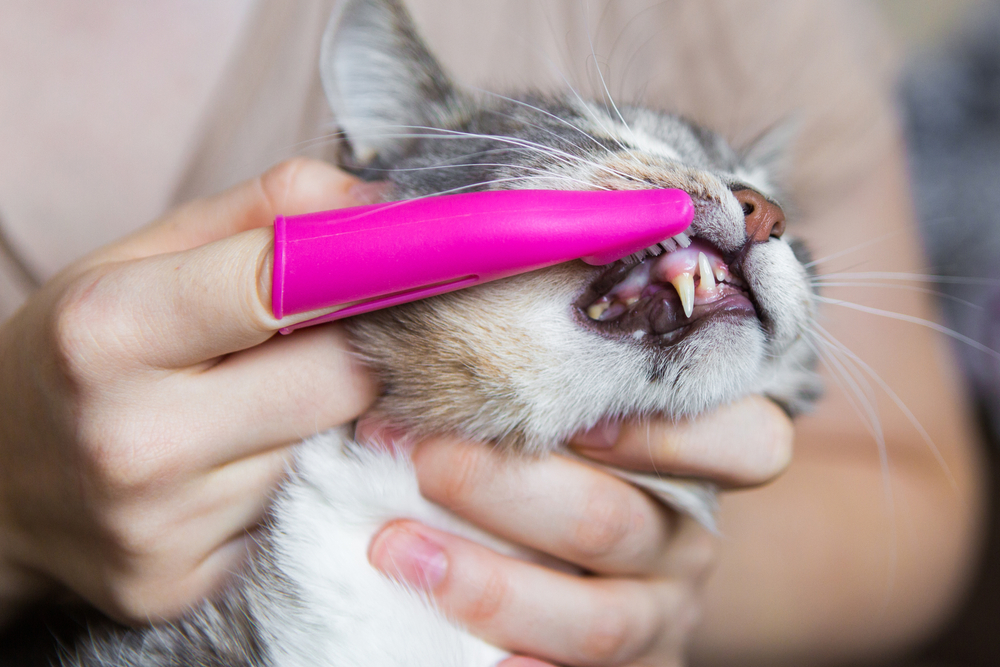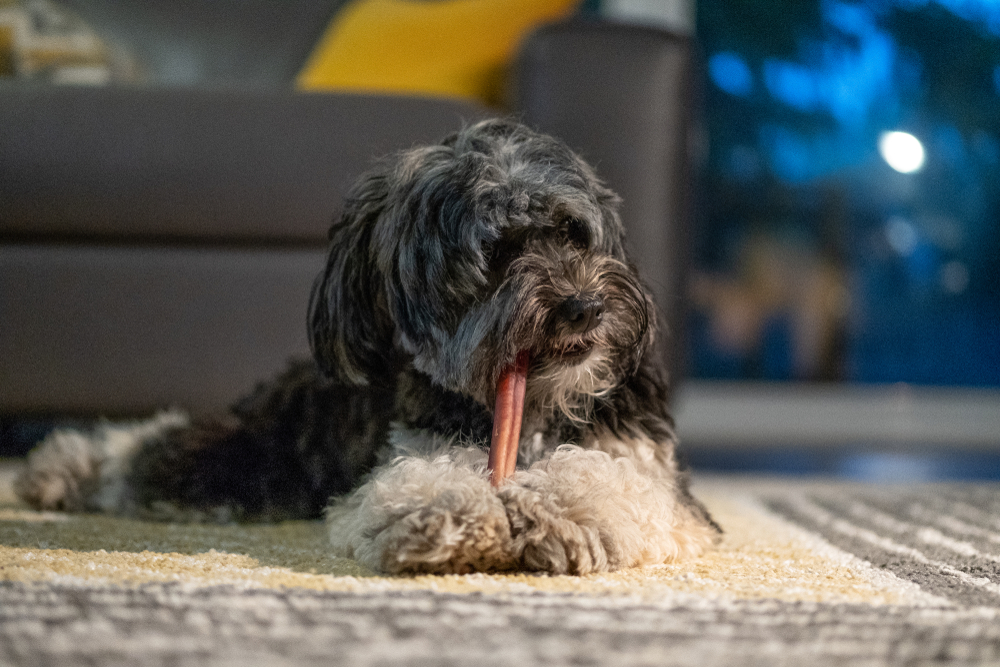Dental disease is the most commonly diagnosed condition among cats and dogs—is your pet affected? Unfortunately, the answer is probably yes—80% of dogs and 70% of cats show early periodontal disease (i.e., dental disease) signs by 3 years of age. And, because the damage occurs below the gum line, pet owners seldom notice until the condition has reached its late stages, and tooth removal is necessary to relieve pain and suffering.
Periodontal disease affects more than teeth—bacteria from the mouth can enter the bloodstream and damage your pet’s heart, liver, lungs, and kidneys. Fortunately, this condition is entirely preventable with proper at-home dental care and professional cleanings at North Waterloo Veterinary Hospital.
Defining periodontal disease in pets
When bacteria multiply on your pet’s teeth, they create an invisible layer of plaque. Over time, plaque accumulates layer upon layer, creating a visible, hard, immovable and unsightly brown or tan substance called tartar. Bacteria also move below the gum line, where they damage gum tissue (i.e., gingivitis), destroy tooth roots, and erode the connecting structures that hold teeth in place, including the surrounding bone.
Identifying periodontal disease in pets
Unfortunately, periodontal disease’s sneaky, invisible nature means the condition is common in pets. Visibly clean or healthy-looking teeth do not ensure a disease-free mouth—in fact, most pets do not show any disease signs.
Periodontal disease can be invisible to the naked eye, including a trained veterinarian’s, until the disease reaches stage 3 when, unfortunately, the only successful treatment includes a professional veterinary dental assessment, X-rays, and a dental cleaning under anesthesia. At stage 3, pet owners may notice disease signs, including:
- Bad breath
- Gingivitis (i.e., inflamed gums)
- Drooling
- Sensitivity to being petted or muzzle-handling
- Visibly broken or damaged teeth
- Drooling
- Bleeding from the mouth
- Changes in appetite
- Changes in activity level
- Unwillingness to play with toys
- Pawing at the mouth or facial rubbing
The veterinary dental cleaning
Like human dentistry, a yearly checkup and dental cleaning are the best ways to ensure your pet’s oral health, and prevent periodontal disease. While home care, such as brushing and dental chews, can significantly reduce plaque formation, a professional cleaning has no substitution. The veterinary dental cleaning under anesthesia is the only way to effectively assess your pet’s dental health, and clean below the gum line where periodontal disease lives. A veterinary dental’s key components include:
- Safe anesthesia — Preanesthetic testing ensures your pet is healthy enough for anesthesia. During the procedure, your pet’s vitals are continuously monitored by electronic equipment and a registered veterinary technician.
- Dental X-rays — X-rays are the only way to assess the tooth root and surrounding bone, and are essential for determining which teeth need to be extracted, and which can be saved.
- Comprehensive oral exam — Our veterinarians carefully examine each tooth for damage, irregularity, and periodontal pockets. The rest of the oral cavity is also evaluated for infection, inflammation, or tissue changes that may suggest oral cancer.
- Scaling and polishing — We use an ultrasonic scaler to break away tartar and plaque above and below the gum line, and then polish every surface, to remove any microgrooves and discourage plaque attachment.
- Extractions — If necessary, our veterinarians will use gentle techniques to remove damaged teeth. After each extraction, we take an X-ray to confirm complete root removal.
- Pain management — Local anesthetic blocks are used to numb the area, and pets who have extractions or painful procedures are sent home with additional pain medication.
- Recovery and healing — Recovery from dental extractions may include administration of pain medication and a soft diet. Generally, pets with periodontal disease feel much better after the diseased teeth are removed.
At-home dental care for pets

Your pet’s dental health is a team effort—in addition to professional care at North Waterloo Veterinary Hospital, daily home care is essential for reducing plaque and tartar accumulation. Before beginning a home care routine, schedule a dental consultation, to ensure your pet isn’t experiencing any pain or discomfort. If you attempt to brush damaged teeth or inflamed gums, your pet will form a negative association with oral care, which can make the process more difficult.
The best time to start a home care routine is after a veterinary dental cleaning, or while your pet is still a puppy or kitten. Effective techniques for at-home care include:
- Toothbrushing — Once or twice daily is recommended. This video tutorial can help you get started.
- Dental wipes or gels — Some owners find these easier than toothbrushes and paste.
- Dental diets — These foods are designed to encourage chewing, and their large, fibrous kibbles create a scrubbing action against the teeth.
- Dental chews — Specially designed chews provide a slight give when your pet bites down, creating an abrasive action against plaque and tartar.
- Water additives — Additives are a good option for pets who do not tolerate their face or mouth being handled.
When selecting a home care product, always ensure the item is made for pets—never use human dental products, which contain pet-toxic xylitol and other harmful ingredients. Also, check for the Veterinary Oral Health Council (VOHC) seal of approval, which is awarded only to products proven effective against plaque and tartar formation.
Your pet’s dental care is an essential part of their overall health, and maintaining their teeth and gums can add years to their life. Contact North Waterloo Veterinary Hospital to schedule your pet’s dental consultation. Give them a fresh start—and fresh breath, too!







Leave A Comment